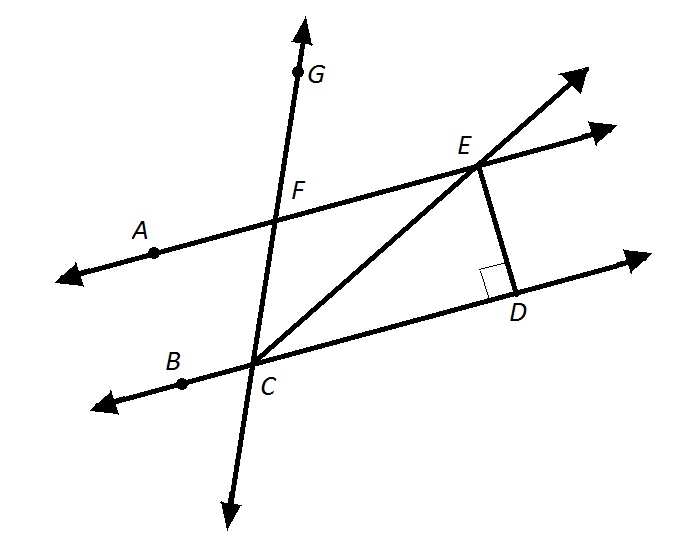Angles and Triangles
Help Questions
GED Math › Angles and Triangles
Which of the following can be the measures of the three angles of an acute isosceles triangle?
Explanation
For the triangle to be acute, all three angles must measure less than 


In an isosceles triangle, at least two angles are congruent, so we can eliminate 
The degree measures of the three angles of a triangle must total 180, so, since 


Which of the following describes a triangle with sides of length 9 feet, 3 yards, and 90 inches?
The triangle is isosceles but not equilateral.
The triangle is scalene.
The triangle is equilateral.
Insufficient information is given to answer this question.
Explanation
One yard is equal to three feet, and one foot is equal to twelve inches. Therefore, 9 feet is equal to 


Note: Figure NOT drawn to scale.
Refer to the above triangle. Evaluate 
Explanation
The degree measures of a triangle total 

Note: Figure NOT drawn to scale.
Refer to the above figure. Evaluate 
Explanation
The degree measures of the interior angles of a triangle total 

Three angles with measures 

Figure drawn to scale.
Refer to the above diagram.
Which of the following is a valid description of 
Obtuse
Acute
Right
Equiangular
Explanation
One of the angles of 



Refer to the above diagram.
Which of the following is a valid description of 
Right
Equiangular
Acute
Obtuse
Explanation
One of the angles of 


Which of the following follows from the fact that 
Explanation
A congruency statement about two triangles implies nothing about the relationship between two angles of one of the triangles, so 
Also, letters in the same position between the two triangles refer to corresponding - and subsequently, congruent - angles. Therefore, 
Of the given choices, only 
An exterior angle of an isosceles triangle measures 
Insufficient information is given to answer this question.
Explanation
The triangle has an exterior angle of 

Since this is an obtuse angle, its other two angles must be acute. By the Isosceles Triangle Theorem, an isosceles triangle must have two congruent angles - the acute angles are those. Since the sum of their measures is the same as their remote exterior angle - 

An exterior angle of an isosceles triangle measures 
Insufficient information is given to answer this question.
Explanation
The triangle has an exterior angle of 

Since this is an obtuse angle, its other two angles must be acute. Therefore, this angle is the one of greatest measure.
An exterior angle of an isosceles triangle measures 
Insufficient information is given to answer this question.
Explanation
The triangle has an exterior angle of 

Case 1: Two angles have measure 
![\left [180 - (50 + 50 ) \right ] ^{\circ } = 80 ^{\circ }](https://vt-vtwa-assets.varsitytutors.com/vt-vtwa/uploads/formula_image/image/222438/gif.latex)

Case 2: One angle has measure 


The given information is therefore inconclusive.











































